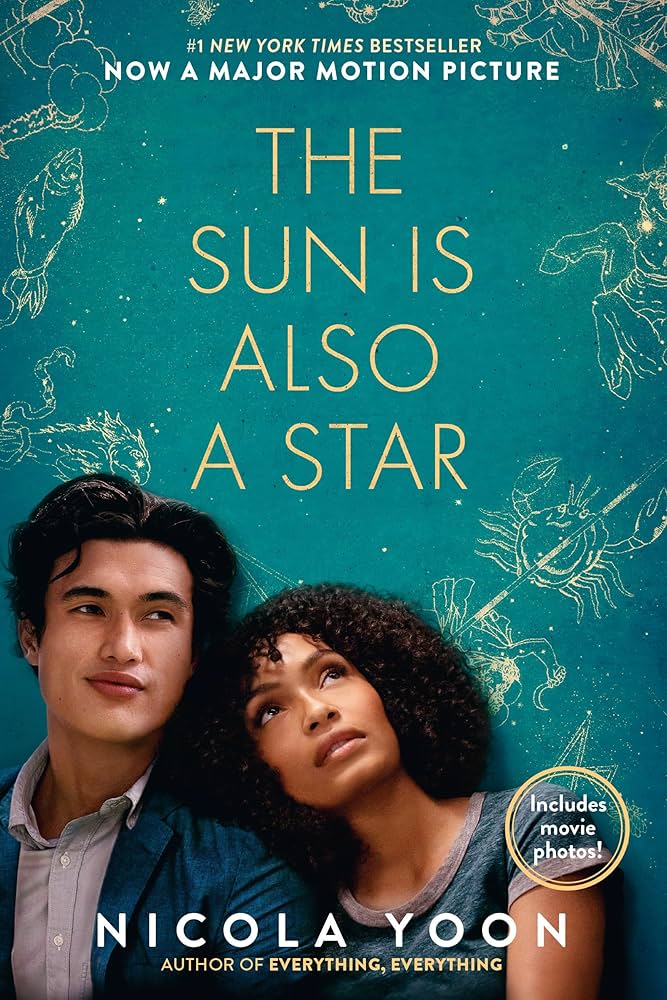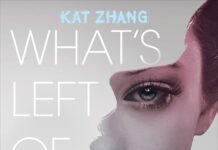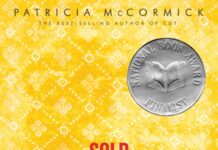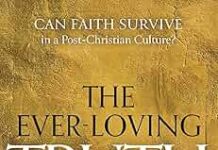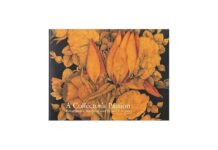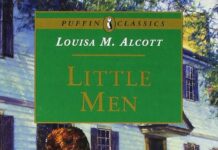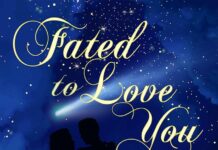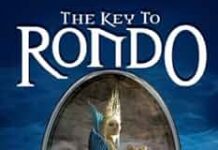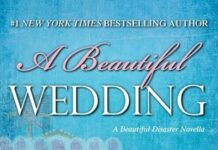In Nicola Yoon’s The Sun Is Also a Star, the threads of fate and identity intertwine with the vibrancy of New York City, creating a story that pulses with urgency and possibility. This novel embarks on a single day’s journey, where chance encounters and steadfast beliefs challenge the characters’ understanding of who they are and what their futures hold. As themes of destiny and self-discovery unfold, Yoon crafts a narrative that invites readers to ponder the delicate balance between choice and circumstance. This review delves into how The Sun is Also a Star navigates these complex ideas through its heartfelt storytelling and richly drawn characters.
Exploring the Intricacies of Fate and Choice in The Sun Is Also a Star’s Narrative Structure and Character Development

Nicola Yoon masterfully intertwines fate and choice throughout the novel, crafting a narrative that feels both certain and deeply personal. The characters’ decisions seem to dance on the edge of predestination, where every chance encounter propels the story forward yet remains grounded in the authentic complexity of human agency. natasha and Daniel’s fleeting day together is a profound exploration of how seemingly random events can shape identity and life paths, challenging the reader to consider what is truly within our control. The narrative structure supports this thematic tension, alternating perspectives and internal monologues that reveal not only the distinct desires shaping each character but also the unseen threads of fate weaving their stories together.
Character development in The Sun Is Also a Star hinges on the delicate balance between external forces and internal choice. Natasha’s pragmatism clashes with Daniel’s idealism, highlighting a broader conversation about cultural background, destiny, and self-determination. The story’s progression unfolds like a complex dance, where both characters confront questions of identity influenced by family, immigration status, and personal dreams. This interplay gives rise to transformative moments that defy simplistic labels of fate or free will.the table below summarizes how key elements influence their development:
| element | Natasha | Daniel |
|---|---|---|
| Worldview | Scientific, skeptical of fate | Romantic, believes in destiny |
| Primary Conflict | Impending deportation | Pressure to follow family expectations |
| Moment of Choice | Deciding to trust emotions | challenging his predetermined path |
| Growth Outcome | Embracing uncertainty | Embodying agency |
How The Sun Is Also a Star Weaves Cultural Identity and Personal Dreams into a Compelling Teenage Romance

The romance itself becomes a poignant metaphor for the intersection of personal dreams and larger societal forces. as Natasha and Daniel race against time, their connection unfolds amidst questions about free will, chance, and the weight of family history. The novel uses a creative narrative structure, including multiple perspectives and snapshots of life around them, forming a mosaic that reflects the unpredictability of youth and the universal quest for belonging. Here’s a glimpse of how their dreams and identities converge:
| Character | Cultural roots | Dreams & Challenges |
|---|---|---|
| Natasha | Jamaican immigrant | Becoming a scientist; facing deportation |
| Daniel | Korean-American | Becoming a poet; overcoming parental expectations |
the Role of New York City as a Living,Breathing Backdrop influencing Destiny in Nicola Yoon’s Novel

In the Sun is Also a Star, New York City is more than just a setting-it pulsates with energy, shaping the trajectory of the characters’ lives. The city’s relentless pace mirrors the urgency of Natasha and Daniel’s burgeoning relationship, while its diverse streets reflect the varied cultural identities that each protagonist carries. Amidst the towering skyscrapers and busy subway stations, the city becomes an omnipresent force, challenging the notion of fate by presenting a landscape where chance encounters feel both inevitable and improbable. NYC’s texture- from the aromatic street food vendors to the quiet moments found in hidden parks-creates a vivid tapestry where identity and destiny are constantly in flux.
- Intersection of Cultures: The city’s melting pot of languages and traditions underscores the characters’ struggles to reconcile personal identity with societal expectations.
- Time and urgency: New York’s fast-moving surroundings emphasizes the tension between fleeting moments and profound life changes.
- Unseen connections: The urban maze fosters chance encounters, hinting at an invisible thread weaving the characters’ destinies together.
Viewing New York City as a living entity allows readers to appreciate how external forces mold internal decisions, turning the metropolis into a silent but active participant in the story.Just as the city never sleeps, neither do the possibilities it offers-each street and subway stop imbued with potential that shapes the protagonists’ futures.This symbiotic relationship between place and person complicates conventional ideas of destiny, suggesting that identity is not fixed but constantly evolving through interaction with one’s environment.
| NYC Element | Symbolic Influence | Impact on characters |
|---|---|---|
| Subway Stations | Life’s crossroads | Encounters that redefine paths |
| Street Vendors | Cultural fusion | Highlight identity diversity |
| Times Square | chaos & clarity | Reflects internal conflicts |
Balancing Science and Spirituality: A Deep Dive into the Philosophical Questions Raised by The Sun Is Also a Star
Nicola Yoon’s The Sun is Also a Star masterfully intertwines the empirical with the ethereal, inviting readers to contemplate the tension between the scientific worldview and spiritual belief systems. at its core, the novel explores whether human lives are governed by cold, unyielding fate or by chance and choice. The protagonists’ journeys oscillate between the tangible-measurable moments, genetic predispositions, and documented immigration laws-and the intangible: destiny, serendipity, and the inexplicable pull of connection. This blend challenges us to reconsider how we define identity, urging an acknowledgment of both the quantifiable facts that shape our existence and the mystical forces that seem to defy logic.
throughout the narrative, questions arise that blur disciplinary lines, encouraging a philosophical inquiry through both scientific and spiritual lenses. Consider how the novel approaches:
- Determinism vs. Free Will: Are the characters’ decisions truly their own,or preordained by fate?
- The role of Chance: How do random events intertwine with larger cosmic designs?
- Identity formation: How do genetics,environment,and belief systems converge to shape who we are?
| Aspect | Scientific Outlook | Spiritual Perspective |
|---|---|---|
| Fate | Predetermined by laws of nature and biology | Guided by cosmic forces and destiny |
| Identity | Defined by genetics and socio-environmental factors | Shaped by soul,experiences,and spiritual growth |
| Choice | Result of neural decision-making processes | Expression of free will and karmic balance |
Examining the Emotional Complexity of Natasha and Daniel Through Their Unique Perspectives and Voice

Natasha and Daniel serve as two emotional lenses,each revealing the many facets of human experience through their distinct voices.Natasha’s narrative is laced with urgency and pragmatism, reflecting her struggle against the impending threat of deportation and the pressure to uphold her family’s future. Her voice carries the weight of duty, showcasing a fear of losing control, yet woven through her pragmatic outlook is a vulnerable desire to believe in the possibility of change. In stark contrast, Daniel’s perspective bursts with youthful idealism and poetic whimsy, embodying the hope and spontaneity that arise when fate seems to bend toward possibility. Through his voice, readers gain insight into a soul yearning for expression and understanding, caught between cultural expectations and personal dreams.
- Natasha’s voice: grounded, urgent, pragmatic
- Daniel’s voice: lyrical, hopeful, introspective
- Shared emotional threads: identity questioning, longing for connection, confrontation with fate
The emotional complexity of their characters is further highlighted when viewed side by side. Each moment they share is charged with both tension and tenderness, a delicate dance of two souls threading through fate’s intricacies. The juxtaposition not only strengthens the narrative but invites readers to contemplate how vastly different perspectives can illuminate the same emotional landscape. This dynamic becomes even more evident when their emotions are mapped against key moments in the story, illustrating a rich interplay of fear, hope, despair, and joy.
| Emotional State | Natasha’s Expression | Daniel’s Expression |
|---|---|---|
| Fear | Calculated restraint, swallowing doubts | Restless energy, searching for meaning |
| Hope | Quiet optimism, grounded in realism | Vibrant dreams, boundless imagination |
| Love | Cautious warmth, hesitant opening | open-hearted passion, fearless pursuit |
Themes of Immigration, Family Expectations, and Belonging explored Through Natasha’s Journey in the Story

Natasha’s journey poignantly captures the delicate balance between personal dreams and familial duty, a theme that resonates deeply in immigrant narratives.Torn between her scientific aspirations and her parents’ traditional expectations,she embodies the tension often felt by children of immigrants striving to honor their heritage while forging their own paths.Throughout the story, Natasha’s decisions reflect the silent negotiations many face within their families-where love and obligation intermingle with fear of loss and hope for a better future.
Belonging emerges as both a physical and emotional quest for Natasha,who confronts the harsh realities of immigration policies alongside the intangible need to find a place where she truly fits. This duality is emphasized through her interactions with the city’s diverse fabric and the evolving bonds she forms. Consider the following elements that highlight these intertwined themes:
- Family Expectations: The pressure to succeed for the sake of familial sacrifice
- Immigration Challenges: Navigating uncertainty in pursuit of stability
- Search for Identity: Balancing cultural roots with individual desires
- Community & Connection: Finding belonging beyond geographical borders
| Theme | Natasha’s Experience |
|---|---|
| Expectation | Academic success as family honor |
| Immigration | Facing deportation fears |
| Belonging | Searching for a home in New York’s melting pot |
Narrative Techniques That Enhance the Suspense of time and Fate Colliding in Nicola Yoon’s Storytelling

Yoon masterfully employs a dual narrative structure to heighten the tension surrounding the inevitable meeting of her protagonists. By weaving together the perspectives of Daniel and Natasha, readers are invited to experience both their internal fears and hopes concurrently. This technique creates a palpable sense of urgency, as the ticking clock becomes an unspoken character itself, relentlessly pushing the story forward. the alternating viewpoints allow readers to speculate on the fragile intersection of fate and choice, making every moment of near-encounter feel charged with potential and outcome.
In addition, Yoon’s use of nonlinear timelines and vivid sensory details disrupts conventional storytelling rhythms, mirroring the chaotic nature of life’s unpredictability. The narrative often circles back to crucial moments, replaying them with fresh emotional insights, which reinforces the theme of destiny’s elusive grasp. Visual motifs-like the repeated image of the sun and the contrasting urban jungle of New York City-serve as metaphors for the collision of time and fate, embedding the suspense within the story’s very fabric. These narrative techniques,combined,create a dynamic tension that invites readers to question how much of life is written by circumstance versus personal agency.
How The Sun Is Also a Star Challenges Traditional young Adult Romance Tropes with Thoughtful Realism
Nicola Yoon takes a refreshing approach in her novel by weaving together the raw complexities of life with the enchanting notion of fate, moving beyond the predictable patterns typically found in young adult romance. Instead of relying on overused clichés, the story presents relationships grounded in authenticity and diverse cultural perspectives, allowing readers to explore the intricate layers of identity. The protagonists’ backgrounds and worldviews challenge stereotypical portrayals, highlighting how personal history, immigrant experiences, and existential questions shape connections rather than mere romantic destiny. This gives the narrative a rich texture where love is just one fragment of a larger, more compelling human experience.
The novel also disrupts the conventional timeline and pacing of young adult romances by unfolding events within a single day, emphasizing the fleetingness and unpredictability of life itself. This compressed timeframe allows readers to savor moments of chance and choice while contemplating philosophical themes like determinism versus free will.Below is a glimpse of how Yoon contrasts traditional tropes with her unique storytelling elements:
| Traditional YA Romance | The Sun Is Also a Star |
|---|---|
| Love at first sight portrayed as fate | Love explored through skepticism and intellect |
| Predictable romantic tension and resolutions | Uncertain outcomes emphasizing realism |
| Focus on romantic idealism | Blends romance with cultural identity and social issues |
- Characters shaped by real-world dilemmas, not just emotions.
- Dialogue that balances poetic musings with hard truths.
- A narrative style encouraging readers to question fate and choice.
the Impact of Multiculturalism and Intersectional Identity on Character Motivation and Plot Progression

Nicola yoon masterfully weaves multiculturalism and intersectional identity into the very fabric of her characters, turning their diverse backgrounds into powerful engines for motivation and narrative movement.Natasha’s Jamaican-Korean heritage and Daniel’s Jamaican-Jewish upbringing are not mere cultural footnotes; they are catalysts that shape their worldview, decisions, and emotional landscapes. This blending of identities challenges the characters to navigate a world that frequently attempts to categorize and define them, propelling them toward choices that explore fate, belonging, and self-acceptance.Their intersecting identities also highlight the tensions between cultural expectations and personal desires, making their motivations feel profoundly authentic and complex.
- Conflict and Resolution: internal struggles arising from cultural dualities intensify plot conflicts.
- fate vs.Agency: Multicultural influences blur the lines between destiny and personal choice.
- Empathy and connection: Shared intersectionality fosters deeper understanding between characters.
To visualize how these elements interplay throughout the novel, consider the following table illustrating key moments where multicultural factors influence pivotal choices and shifts in the story’s trajectory:
| Plot Point | Intersectional Influence | Character Motivation |
|---|---|---|
| Natasha’s Deportation Hearing | Cultural identity and immigrant status | desire for security vs. hope for a future |
| Daniel’s Poetry Reading | Blend of Jamaican roots and American dreams | Seeking validation and self-expression |
| Shared Moments of Vulnerability | Mutual understanding of cultural complexities | Building trust and challenging fate |
Why The sun Is Also a Star Remains Relevant for Readers Navigating Identity and Uncertainty in Today’s World

In a world increasingly marked by rapid change and cultural complexities, Nicola Yoon’s narrative captures the delicate dance between destiny and self-discovery. The characters’ journeys explore how identity is both shaped and challenged by the external forces of immigration, family expectations, and societal labels. For readers feeling the tension between who they are and who the world expects, the story acts as a mirror reflecting their own inner conflicts.
The novel’s portrayal of uncertainty resonates deeply through its focus on chance encounters and the fragility of life’s decisions. It invites readers to consider:
- How much control do we truly have over our futures?
- In what ways do cultural and familial identities intersect or clash?
- What role does hope play amidst the unpredictability of life?
This thematic richness offers more than entertainment-it provides a map for understanding the complexities of identity in a multicultural world.
| Character | Identity Challenge | Moment of Self-Realization |
|---|---|---|
| natasha | Fearing deportation; cultural ties | Finding strength in vulnerability |
| DANIEL | Parental expectations vs dreams | Choosing love over obligation |
Recommendations for Educators and Book Clubs Looking to Spark Conversations About Fate, Identity, and Choice
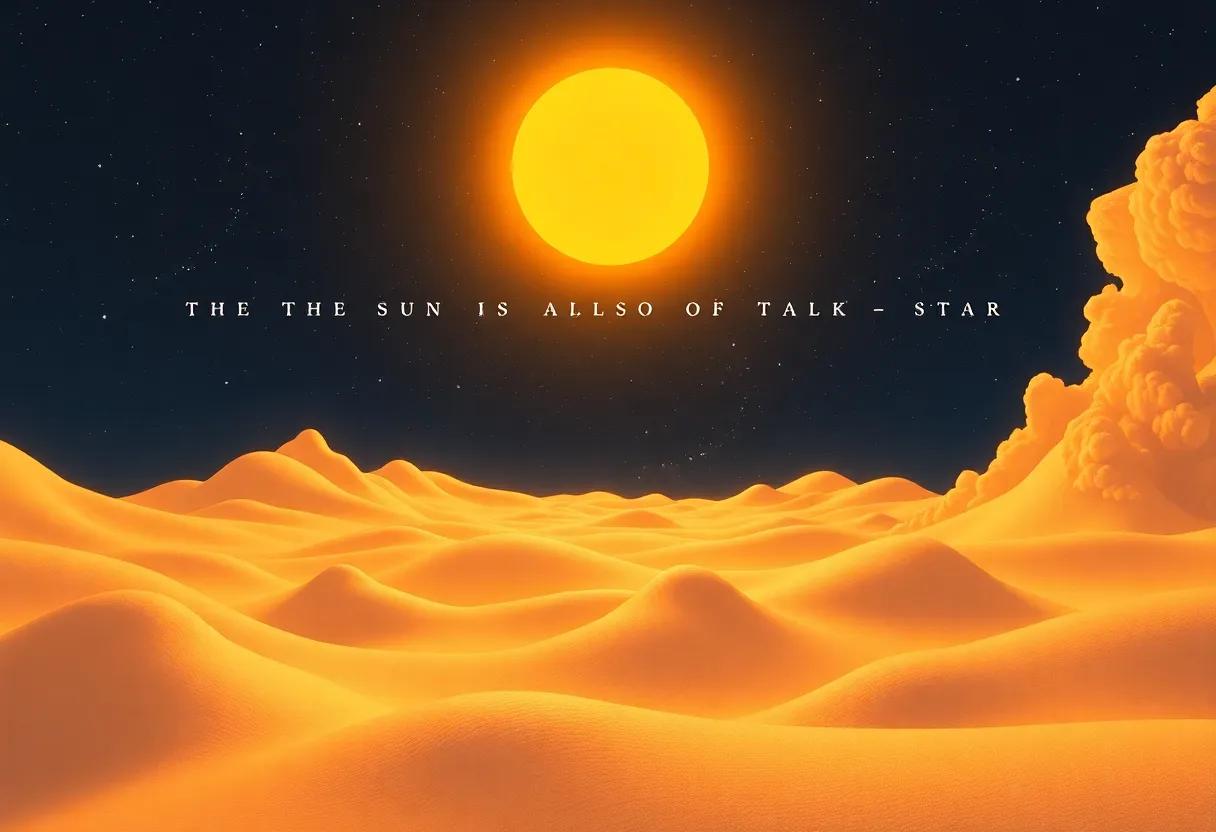
- Use multimedia prompts: Scenes from the film adaptation or related music playlists can spark emotional connections.
- Invite personal reflections: Participants can journal about moments when they felt their identity was challenged or redefined.
- Create thematic breakout groups: Focus on fate, family influence, cultural identity, or the role of chance in human connections.
| Discussion Prompt | Purpose |
|---|---|
| “If you could rewrite one choice a character made, what would it be and why?” | Encourages critical thinking about consequences and identity formation. |
| “How does culture influence Daniel and Natasha’s decisions?” | Promotes awareness of cultural impact on identity and fate. |
| “Can fate be changed,or is it predetermined?” | Stimulates philosophical exploration about choice vs. destiny. |
The Lasting Impressions of Nicola Yoon’s Writing Style and Her Contributions to Contemporary Young Adult Fiction

Nicola Yoon masterfully weaves together themes of fate and identity through a narrative style that is both intimate and expansive. Her use of multiple perspectives allows readers to deeply connect with her characters’ innermost thoughts and emotions,offering a multifaceted exploration of what it means to be young and vulnerable in a rapidly changing world. The way she blends poetic prose with candid dialogues creates a compelling rhythm that captures the essence of contemporary adolescence with raw authenticity.This stylistic innovation challenges conventional storytelling, encouraging readers to ponder the delicate threads that tie our experiences together across moments of chance and choice.
Beyond her distinctive voice, Yoon’s contributions to young adult fiction are marked by her dedication to diversifying the genre and exploring complex cultural identities. She shines a light on characters frequently enough underrepresented, inviting readers to witness the beauty and challenges of navigating dual identities in a multicultural landscape. Her work, rich in both emotional depth and social relevance, has inspired a new generation of writers and readers to embrace narratives that question societal norms and celebrate individuality. The table below highlights key elements that define Yoon’s impact on contemporary YA literature:
| Aspect | Impact |
|---|---|
| Narrative Structure | Innovative multi-perspective storytelling |
| Thematic Focus | Identity, fate, family dynamics |
| Cultural Representation | Diverse, authentic voices |
| Emotional Connection | Raw and poetic prose |
| Genre Influence | Redefining YA boundaries |
In the tapestry of contemporary young adult literature, The Sun Is Also a Star by Nicola Yoon stands out as a thoughtful exploration of fate and identity, weaving together the threads of chance encounters and deeply personal journeys. Through its vivid characters and poignant themes, the novel invites readers to reflect on the unpredictable forces that shape our lives and the choices that define who we are. As the final page turns, it leaves us pondering not only the story of Natasha and Daniel but also the intricate dance between destiny and self-discovery that resonates long after the book is closed.

